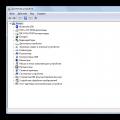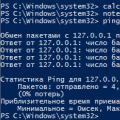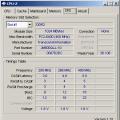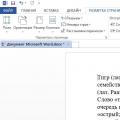In some cases, when a user tries to format their flash drives, the system displays the error “Windows cannot complete formatting.”
Sometimes this happens when working with HDDs, DVD RWs and other drives, but most often Micro SDs are affected by this problem.
Why does Windows write this text?
This happens because the OS for some reason cannot perform formatting on its own, or the reason is a malfunction of the SD card or hard drive itself.
It's also possible that earlier map memory was used on another operating system(Linux, Mac OS and the like) and the file system is incomprehensible to Windows.
The inability to work with the file system is the most common cause of this error.
This error looks like the one shown in the figure.
But what to do when the system produces such an error? There are several ways.
The simplest of them is performed using standard Windows tools and is available for both Windows 7 and Windows 10, and even for the good old Windows XP.
Solving the problem using the system
Step-by-step instructions on how to remove this error when formatting a removable disk it looks like this:
- Press the combination of Win + R buttons on the keyboard. This opens the Run dialog box. The image shows which keys need to be pressed on the keyboard and the window that should appear after this (circled in green).

- In this window you need to enter the following: diskmgmt.msc and press Enter on the keyboard. Thus, we opened the Disk Management program.
- In the window that appears, you need to find the designation of the memory card. You can recognize removable media by the corresponding “Removable device” inscription at the bottom of the program and by the image of a memory card, which differs from other media at the top.

- In one of the places indicated by green frames in the photo above, you need to click the right mouse button. As a result, you can see the drop-down menu shown in the figure.

- In this menu you need to click on the inscription “Format...”. Then the flash drive will be formatted using a slightly different algorithm than in other cases.
Clarification! Perhaps the problem is that the media is simply not allocated. Then the inscription “Delete volume” (highlighted with a yellow frame in Figure No. 4) will be active, not dim, that is, you can click on it. Try this. After this you will need to create new volume.
Creating a new volume
To create a new volume on unallocated media, you need to right-click on it and select “Create a simple volume...” from the drop-down menu.

After this, the “Creation Wizard” will open. simple volumes”, in which you should not change any parameters - we leave everything as standard and just click the “Next” button several times.
After this, in the Disk Management program, “Fixed” will be written opposite the flash drive, as shown in Figure 6.

After this, you can again try to format the flash drive using standard means - through “My Computer” by right-clicking on the desired media and selecting “Format...”.

Disabling a foreign process in the system
It is possible that some extraneous process in the system is preventing the formatting of the flash drive.
To exclude this option, you must do the following:
- Restart the computer in safe mode. To do this, open the “Start” menu, then click on the button circled in green in the image and select “Restart” (this is for Windows 7).
The computer will turn off and immediately turn on again. So, immediately after shutting down, you should press the F8 button and wait for it to load.

- After this, you should run the command prompt as an administrator. There are many different ways to perform this action.
The simplest of them is to hold down the Shift key on the keyboard and right-click on any free space on the desktop. In the menu that appears, select “Open command window”.

- In the window that appears, you need to write the following: format [drive letter]:. To find out the drive letter, you need to go into my computer and look at what is written next to the drive, as shown in the picture (indicated by arrows).
In our case, this is the letter “e”, so in the command menu we write “format e:”, as shown in the photo below (circled in blue) and press the Enter key.

If this does not help, you will have to use outside help, that is, third-party recovery programs.
Disk recovery programs
One such program is D-Soft Flash Doctor. It is very easy to download it on the Internet. The program window looks as shown in the figure.

In this window you need to select our media. You can recognize it by its letter (in our case it is “e”).
To do this, you just need to click on the symbol of the flash drive at the top of the program (highlighted in orange in the photo above).
After this, you can select the “Recover media” option (indicated by a red frame). Recovery will occur, after which you can try to format the disk again.
You can also select the “Scan for errors” option.
Then the scanning will begin and the user will have the opportunity to find out what is wrong with his media.
If the flash drive not only does not format, but also shows that the volume is 0 MB, EzRecover helps a lot. By the way, you can also find out the size of the flash drive in “My Computer”.
In the figure, red lines highlight the places where the storage capacity is shown.

In our case, it shows 5.18 GB, but if it shows 0 MB, feel free to download EzRecover.

EzRecover automatically finds removable media; you don’t even have to specify anything here.
After opening the program, the user only has to press the “RECOVER” button and wait a little.
There are many more programs on the Internet for recovering flash drives, you can try others. If none of these options produces results, the only thing left to do is throw away the flash drive.
The video below clearly shows how to format a disk using standard Windows tools.
Flash drive cannot be formatted, repair using Windows
Solving the problem - Windows cannot complete formatting
Not everyone external devices can be formatted in the usual way. And if the problem is not related to the flash drive itself, you can try your luck by resorting to using several other methods. From standard means solving the problem, before third party programs which will solve your problem.
Windows Standard Tools
We can always resort to third-party software, but is it worth it? After all, Windows has an excellent utility built into it, which many people simply forget about. We need to get into Disk Management. So, you must do the following:If in this case you received a similar error, you should try using third-party software. We will talk about its use in the future.
USB Flash Drive Repair Tool
We won’t go into detail about what low-level formatting is and other terms that you don’t need. The only thing we want is to achieve a positive result and make the removable media work. You need to do the following:- Download the utility from here. She will be first on the list. No installation required;
- Run the downloaded software by unpacking it from the archive;
- Next, we have two options - click on the “Format” or “Restore” button. The first one will produce a similar effect to what you could achieve using the previous instructions; the second one will allow us to restore failed partitions thanks to the same low level formatting. That's why we choose “Restore”;
- Unfortunately, the program does not have the ability to select a disk when activating recovery mode. The only option is to download the software to the USB flash drive and restart it;
- Confirm your desire to restore the device by clicking on the “Yes” button;
- Wait for the process to complete;
- Format the memory card in a standard way.
Command line as Administrator
Not familiar with the command line? No problem, thanks to our instructions you can easily handle it. Let's start:
As you can see, there is nothing complicated here. If you fail this time, most likely the problem lies with the removable media itself. It may be faulty. Try contacting service center, where the data recovery procedure is performed.
Often Personal Computer informs the user: “I can’t format the flash drive.” It usually appears when you try to clear the drive of information in the standard way through the “My Computer” window. In this case, access to the drive is blocked and it is no longer possible to open its root directory. In this case, you need to try to restore the drive in a non-standard way using a specialized software. It is the procedure for solving such a problem that will be described within the framework of this article.
Types of flash drives
Today, two types of storage devices of this class are widely used: memory cards and flash drives. What unites them is the technology with which they are made. They are also sometimes called solid state drives. They have a memory chip inside. Its “heart” is a silicon crystal, which consists of memory cells. They, in turn, can take only two values: “0” (no signal) and “1” (potential present). This is the form in which information is stored on them. Memory cards differ from flash drives in their connection interface. In the first case, specialized slots in the card reader are used. Not every computer is equipped with such a device, so problems may arise here. And here Cell phones, smartphones and tablets must be equipped with such a slot. In turn, the flash drive is connected via universal bus USB (rectangular connector), which is equipped with all modern computers. The message “I can’t format the flash drive” on the computer may appear for both the first and second types of drives. The algorithm for solving the problem is identical for them.

Mechanical switch
Most of these devices are equipped with a mechanical switch that protects them from writing. This is done so that if a virus appears on the computer and tries to infect the flash drive with important information, nothing worked out for him. Therefore, at the first stage of solving this problem, when the computer displays the message: “I can’t format the flash drive,” we pay attention to its position. To do this, carefully inspect the body. On SD cards it is located on one of the sides. But it can be hidden on a flash drive. Therefore, you need to examine the case in detail and find it, if it exists. It must be in the OFF position. Manufacturers do not always apply such markings. In this case, switch and check again. If nothing happens, then return it to its original position and proceed to the next stage.
Operating system tools
The first step when the message “I can’t format the flash drive” appears is to use the operating system tools. They are universal and are not tied to the products of strictly one manufacturer. First of all, this is DiskPart. The procedure for launching this program is as follows:

The above procedure is suitable for most cases, including if the PC displays the message “I can’t format the MicroSD flash drive” that is installed in the card reader. If all the previously mentioned manipulations have been performed, but the desired result is not achieved, then proceed to the next stage.
Changing local group policy
The next step is to change the local group policy in the operating system. It is also possible to block recording to such information storage devices. The procedure for solving this problem is as follows:
- Using the previously described method, open the “Run” window.
- Enter the command gpedit.msc.
- In the right column, we open step by step the sections “User Configuration” ˃ “Administrative Templates” ˃ “System” ˃ “Access to...”.
- A list of its values will open in the left field of the application. The “Prohibit recording” item must be set to “Off”.
Closing everything earlier open windows. If nothing happens and the drive is still blocked, then proceed to the next step.

Specialized utilities
At the final stage of solving this problem, it is recommended to use specialized utilities. Each flash drive manufacturer develops its own program for these purposes, which works only with its equipment. As an example, consider the StoreJetFormatter utility. It only works with Transcend brand devices. First you need to download it from the Internet. Then unzip it. After this, it is ready for use and does not need to be installed on the system. We launch it by clicking on the StoreJetFormatter.exe file. In the next USB Device drop-down list, select our drive. Similarly, set the values in the fields File System(type of used file system) and Drive to format. In the Capacity field, enter the disk capacity in gigabytes. Then click the Start button. Upon completion, a message will appear either stating that the operation was successful and the device is ready for further use, or nothing worked and the drive has completely failed. Each manufacturer of such products has similar utilities, and the procedure for working with them is identical.

Bottom line
If all the previously suggested manipulations have been completed, and the computer still says: “I can’t format the flash drive,” then most likely the drive has completely failed. It is no longer possible to restore its functionality. It’s better to buy a new one and thereby solve this issue completely.
The easiest way to transfer information from one computer to another is to use a memory card. But at the same time, you need to know how to format a flash drive if it is not formatted.
File system types
When you format a flash drive, a file system is created on it. With its help, the user will have future access to the data stored on the media. In other words, during this process the storage medium is marked.
Windows works with two file systems - FAT and NTFS (find out which one is used when creating bootable flash drive, see the article “Creating a Windows 10 installation flash drive in various ways”). The main disadvantage of FAT is that it will not allow you to copy a file larger than 4 GB to a flash drive. Also, the system does not provide a full-fledged opportunity to differentiate access rights to information (files and folders).
NTFS is a modern file system that was developed relatively recently, so you will not encounter such problems when using it. But older versions of Microsoft's OS do not support it.
Good to know! Because FAT is supported by all builds of Windows, digital media is sold formatted in this file system.
Formatting a digital storage medium is used to change the file system and to correct some problems that arise during the operation of a flash drive.
Important! Formatting will delete the data stored on the memory card. Therefore, before starting the process, copy all the necessary files.
Fixing the error using built-in Windows tools
Sometimes it is impossible to format a flash drive. In this case, try to correct the situation without purchasing new card memory.
Good to know! Some memory cards are equipped with special mechanical write protection measures. Make sure they are not active before formatting.
In Disk Management utility
If the Windows process is interfering
Sometimes the OS process interferes with formatting a flash drive. In this case, start your PC in safe mode → Command line(Administrator) → enter the command: format i:(i is the drive letter). 
On the command line

Using special programs
If you couldn’t format the flash drive using standard Windows tools, use special programs.
The D-Soft Flash Doctor utility allows you to format, repair a flash drive, and create an image of it for subsequent recording to another removable storage medium. The program interface is clear and simple, so every user can understand it. 
HP USB Disk Storage Software Format Tool was developed by representatives of Hewlett Packard, so do not doubt its reliability. The utility is free and provides a lot of functionality for working with a flash drive:
- forced media formatting;
- eliminating or restoring faulty vectors;
- creating a bootable flash drive.
Conclusion
If the flash drive is not formatted, try using it to fix regular means Windows or special third-party programs. They will help you format or restore bad sectors removable media.




